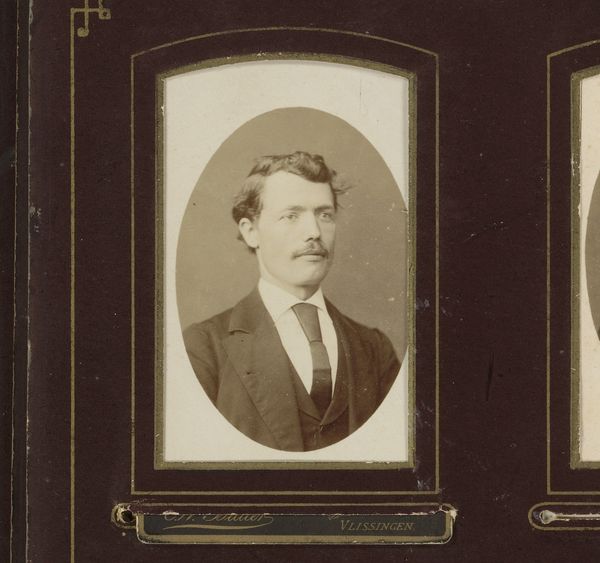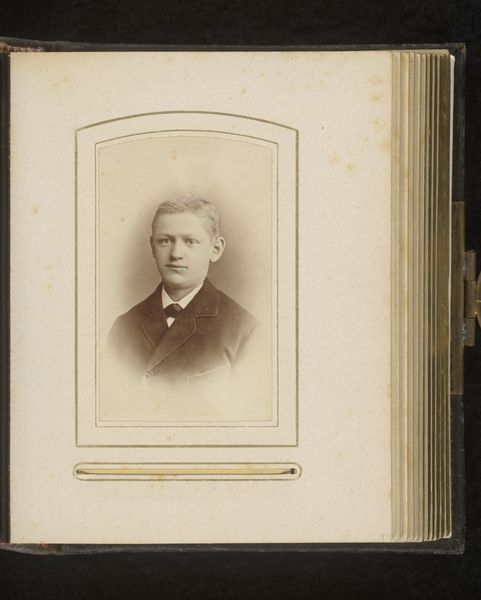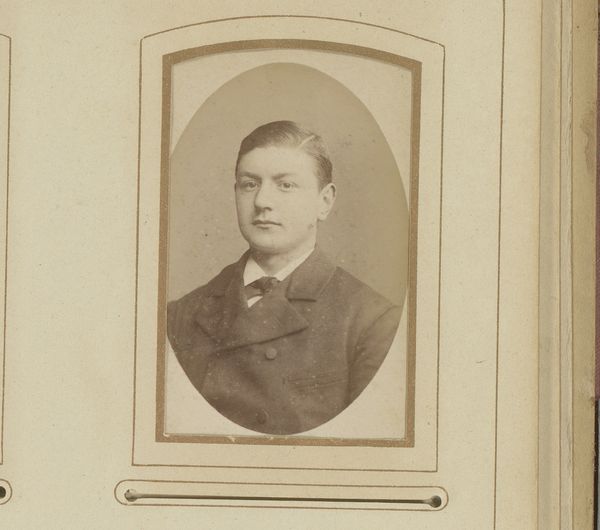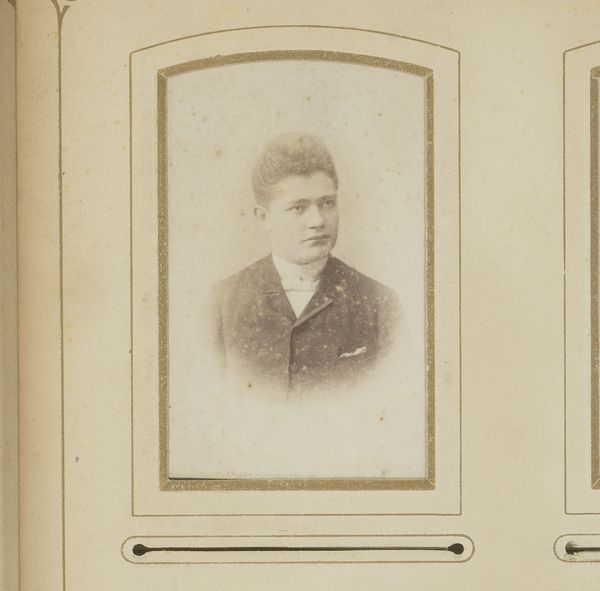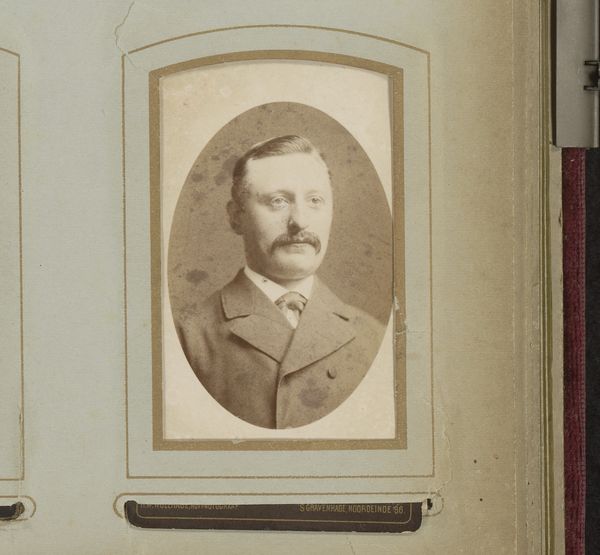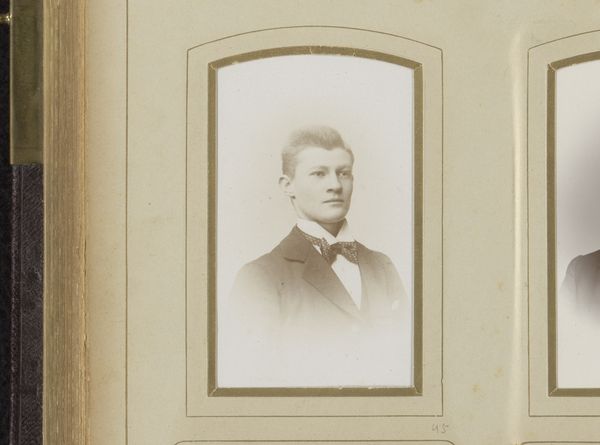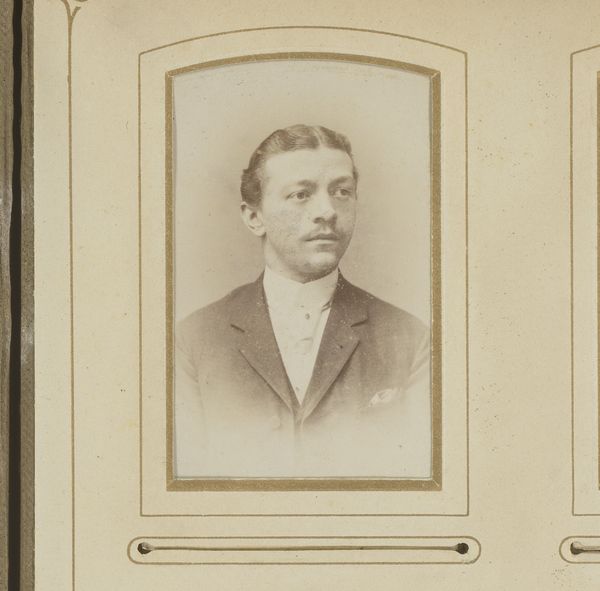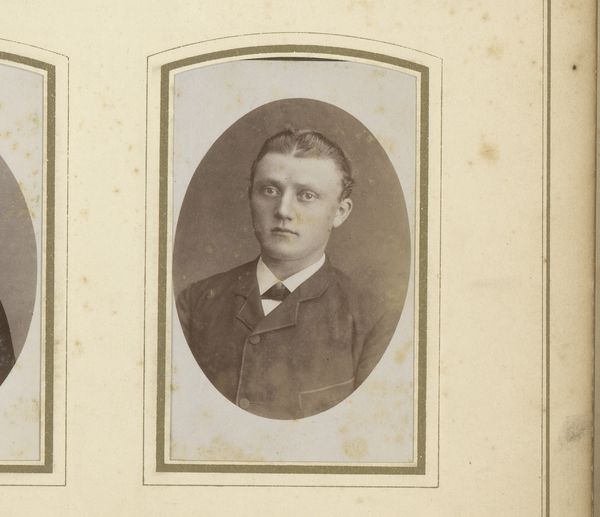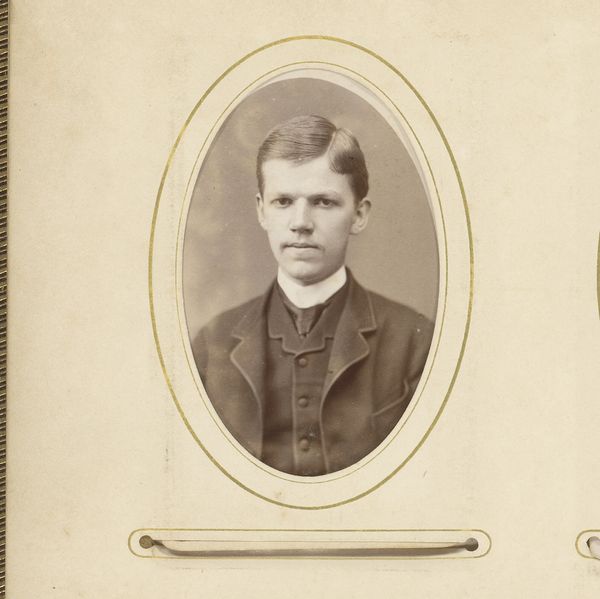
photography, gelatin-silver-print
#
portrait
#
impressionism
#
photography
#
gelatin-silver-print
#
realism
Dimensions: height 82 mm, width 53 mm
Copyright: Rijks Museum: Open Domain
Curator: Looking at this gelatin silver print, I'm immediately struck by its subtle tones and how the light seems to almost dust the surface. There's a tangible quality to the image, almost like you could feel the texture. Editor: Indeed. And if we turn our attention to the artwork, "Portrait of a Young Man with Moustache," produced in 1887 by Johan Christiaan Reesinck, we see the confluence of portraiture, the rise of photography as an accessible medium, and its evolving social functions. Consider that for the rising middle class, photographs became tools for self-presentation, memory, and upward social mobility. Curator: Absolutely. Thinking about that middle class, the dark suit becomes significant—a uniform signaling industry, respectability, perhaps even aspiration. It wasn't merely about aesthetics, but constructing a visual identity tied to socioeconomic status. And what about Zutphen being cited alongside Reesink's name; this must have been their photography studio, so it is fascinating how the materials themselves point to location of manufacture. Editor: Yes. Photography studios democratized access to portraiture. Examining Zutphen allows us to dive deeper into its regional social history. These studios weren't just places to take pictures; they were community hubs where social and cultural narratives were both recorded and actively shaped. Note how this studio placed its branding to assert claims authorship. Curator: I’m interested in how photography was adopted. While it’s termed portraiture, how does its status sit between "high" art and more utilitarian practice? This portrait relies on reproducible technology. Photography allows us to capture something "real", yet each part of the process, from the sitting to development, is managed labor. How does the mass production of imagery change society? Editor: That's key! The mass availability changed the art world. What once demanded commissions from elite painters now came in more democratic form. It enabled, too, the distribution of specific imagery, shaping historical memory and national identities. Think about how these images became political tools to galvanize populations through media dissemination. Curator: Looking closely, the delicate gelatin-silver print technology brings out incredible detail in the face; it’s beautiful how the studio setting is reflected and mediated through a lens that alters everything to a series of chemicals, paper, and then, time. Editor: This is a powerful insight. Analyzing historical technologies demonstrates how socio-political changes are affected, both reflecting society's aspirations and sometimes manipulating its trajectory. Let's embrace that duality of record-keeper and active participant as we study our objects.
Comments
No comments
Be the first to comment and join the conversation on the ultimate creative platform.
